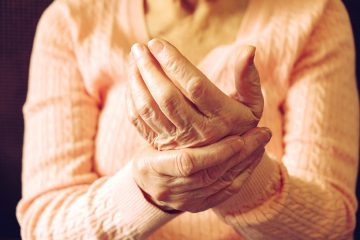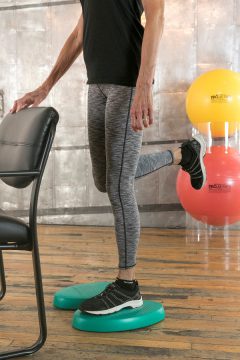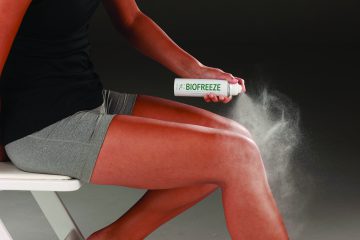
According to the Arthritis Foundation, arthritis is the nation’s number one cause of disability with nearly 53 million adults with doctor-diagnosed arthritis, and almost 300,000 babies, kids and teens with arthritis or a rheumatic condition. Arthritis is the nation’s number one cause of disability with nearly 53 million adults with doctor-diagnosed arthritis and almost 300,000 babies, kids and teens with arthritis or a rheumatic condition. Not only are all of these patients limited in their abilities at work and at school, but pain and decreased mobility prevent them from completing daily tasks without discomfort. We wanted to highlight some of these activities of daily living that can affect those suffering from arthritis and equip you with the tools to help make their lives easier.
WHAT ACTIVITIES CAN ARTHRITIS SYMPTOMS EFFECT?

Walking
Limitations in mobility and the resulting pain from standing upright while supporting the full body weight for prolonged periods of time can make walking a painful activity for patients with arthritis. Six million adults in the United States report that they have significant limitations when walking a quarter mile.
Kneeling and Standing Up
There are many activities that require patients to kneel or bend and standing back up throughout the day, and joint stiffness has been known to cause pain during these activities. In fact, according to the Centers for Disease Control and Prevention, 7.8 million adults in the United States with doctor-diagnosed arthritis have significant limitations when kneeling, bending or stooping.

Climbing Stairs
For many people, climbing stairs is an unavoidable task in their households. “Stairs can be problematic for people with arthritis who have physical limitations caused by hip, knee, ankle, foot or even back pain. Shifting weight from one leg to the other in order to maneuver steps is at least challenging and sometimes impossible… according to the Centers for Disease Control and Prevention, among adults in the United States with doctor-diagnosed arthritis, 4.8 million report having difficulty climbing stairs.”
Grooming and Dressing
Grip strength and dexterity can be a challenge for patients suffering from arthritis. Mundane activities such as getting dressed, brushing hair and shaving can be painful when wrist, hand, elbow, shoulder or neck stiffness limit the range of motion and strength needed for these activities.

Eating
As another example of grip strength affecting everyday activities, picking up a utensil to eat or cut food can be extremely difficult when suffering from arthritis. Because of the strength needed in many joints of the hand and wrist to eat, pain is common during breakfast, lunch or dinner.
Household Activities Like Cleaning and Cooking
Picking up around the house, reaching for a pot out of the cupboard, gripping a towel to clean mirrors: all small activities that are taken for granted in healthy populations. For people with arthritis, however, keeping up with everyday chores around the house can be extremely difficult as their joints react to the increased activity.
HOW TO IMPROVE PAIN DURING THESE ACTIVITIES OF DAILY LIVING
The majority of these activities are unavoidable for the average adult. Therefore, it’s up to clinicians to have a suite of tools and modalities ready to help these patients return to the life they once knew before arthritis. Try these five interventions with your patients today!

1. Assistive Equipment for Mobility and Ergonomics
There are many types of assistive tools that can be utilized to make everyday living easier and less painful:
- Canes, walkers and wheelchairs can be used to assist with mobility and help reduce pain while walking.
- Built-up handles can be placed on utensils or other handles to assist with grip, and can be more durable and reliable than wrapping a towel, cloth or foam around an object.
- Find manufacturers who make ergonomic versions of household items, like this list of garden tools for people with arthritis.
- Bathroom aids such as toilet paper tongs, raised toilet seats, and a toilet safety frame can help to make sure neither safety or independence is compromised.
- Reachers can help patients who experience pain while reaching due to limited range of motion.
- Raised seating, grab bars and safety rails are recommended by The American Occupational Therapy Association (AOTA) to help patients transition to standing from a kneeling or seated position.
- No matter what type of arthritis your patient has, getting dressed every day can become a difficult and painful chore. Tylastic shoelaces, button hooks, flexible sock aids, and even a tool called The Dressing Solution can help give your patients a little more time to enjoy their morning coffee.
- An easy-pull hairbrush, universal electric razor holder, universal holder, cylindrical foam padding, and a nail and toenail clipper are all examples of grooming and primping tools that will further help in allowing patients to look and feel their best.
- Products like ankle braces and knee braces can be used by patients who need support throughout the day.
- Breakfast, lunch, and dinner can still be enjoyable by taking away some of the challenge. Bendable utensils, utensil holders, food guards, one touch can openers, and a full arthritis kitchen helper kit are just a few of the tools available to help while dining.
2. Regular Exercise
One study found that there must be a minimum of a 30% increase in strength to improve pain and disability in patients with knee osteoarthritis. Tools like the TheraBand CLX, cuff weights have been proven to improve pain, increase strength and functional performance and reduce symptoms in patients with knee and hip osteoarthritis. Hand exercisers like the TheraBand Hand Exerciser have also shown to give patients with hand arthritis both strengthening benefits and pain relief. A 2015 study found that treating rheumatoid arthritis with the TheraBand Hand Exercisers outperformed a traditional drug regimen in terms of cost, strength, dexterity and flexibility. The portability of these products makes them even more advantageous – your patients can exercise anytime, anywhere!

3. Stability Training
One study found that patients suffering from knee osteoarthritis who used TheraBand Stability Trainers found significant improvements in quality of life. Alongside a traditional strengthening program, stability training should be prescribed to help arthritic patients who experience pain while walking or climbing stairs.
4. Manual Therapy
The addition of manual therapy to an exercise program has been shown to improve treatment effectiveness compared to exercise alone (This is the part we at the Lambton Chiropractic excel at!) Luckily, there are multiple tools that you can use inside the clinic or prescribe for at-home use to get patients their daily dose of manual therapy.

5. Topical Analgesics
Topical analgesics like Biofreeze are another easy and effective treatment to decrease pain throughout daily activities. In fact, researchers found that Biofreeze can provide temporary pain relief and help improve tolerance and compliance with activity in patients with knee osteoarthritis, as well as provide greater improvements in hand function, perceived grip strength, pain, mood and sleep disturbances in patients with hand arthritis.
